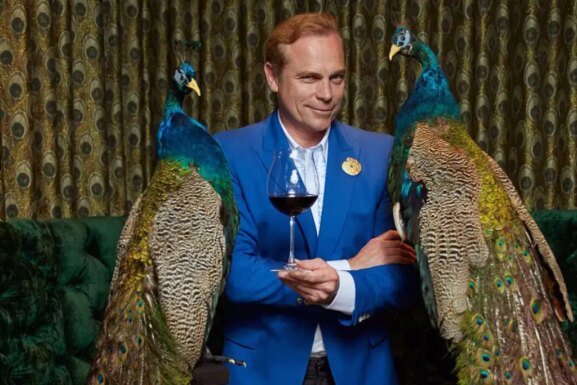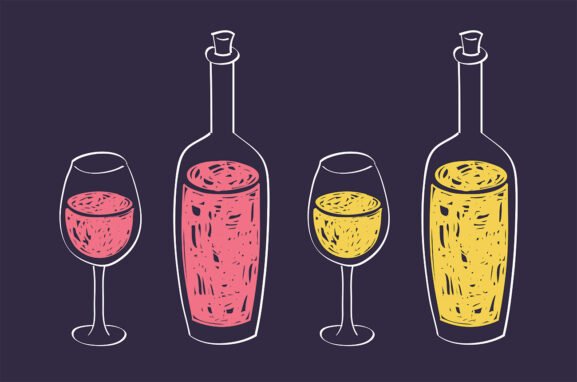Changing Champagne Formula | Wine Enthusiast
Much of Champagne’s historical success has been based on the nonvintage style, a grand recipe that blends older and more mature reserve wines with those from the current harvest.
In doing so, the Grand Marques, or big names, like Moët & Chandon, Veuve Clicquot and Laurent-Perrier, have been able to create a consistent, harmonious house style that wine-lovers can easily recognize and count on.
Some years, this mix can contain up to 50% reserve wines, which add more structure and complex flavors and aromas to the fresher, livelier juice of the current vintage. Other years, winemakers may choose to incorporate less to achieve the desired profile.
The technique has long been used to help winemakers balance out the more acidic wines of cooler vintages, when grapes may not have achieved optimal ripeness, with warmer ones for a fleshier profile.
SPONSORED
Champagne Telmont Réserve de la Terre 2024
Introducing Telmont’s milestone cuvée, Réserve de la Terre: a low-dosage champagne that embodies the rich biodiversity of the maison’s vineyard, the vibrant energy of the soil, and the vitality of the terroir. Radiant, luminous, and full of life, Réserve de la Terre is crafted from organic grapes without the use of pesticides, herbicides, fungicides, or chemical fertilizers. It stands as proof that exceptional champagne can be made without compromising on sustainability.
But with new climatic conditions—including a 1.2 degree increase in temperature over the past 30 years—and riper fruit, Champagne is making the best wines in its history, nearly every single year. As a result, producers, from the big houses to smaller grower-producers, are looking to the future with new releases, changing formulas, updated vinification techniques and other adjustments to the longstanding regional norm.
Some producers are completely overhauling their house style or offering annual reinventions, special blends and premium nonvintage releases. “We have two ways of looking at it: as a threat or an opportunity,” says Jean-Baptiste Lécaillon, the chef de caves of Louis Roederer, referring to the region’s response to new conditions where warmer days and accelerated harvests have produced fruit that is more phenolically ripe and sugary, but with less acidity. “We need to be like a chef and adapt cooking to our ingredients, switching elements and making the best of the fruit—not trying to control it as we once did. We can no longer follow a recipe.”

Accentuating Vintage Variation
Three years ago, in an audacious move, Roederer replaced its much-loved nonvintage flagship, Brut Premier, with its launch of Collection 242.
Referred to as “multi-vintage”—a term not regulated by Appellation d’Origine Contrôlée (AOC) rules but has come to signify a step between vintage and nonvintage—Collection 242 (and subsequently 243, 244 and so on) is intended to highlight the fluctuations of each year rather than blending them away.
Roederer is far from alone in its desire to draw attention to the seasonal variations in Champagne due to a changing climate.

Starting in the 1990s, Charles Heidsieck’s Mis en Cave system identified each base vintage on the back labels of its Brut Resérve. In 1999, Jacquesson’s 700 series began to spotlight the terroir and growing conditions of each year. Around the same time, Krug began numbering its multi-vintage Grande Cuvée that blends wines from previous years with the goal of complementing the current vintage—drawing fanfare among collectors along the way.
To better differentiate the unique characteristics of one vintage from another, Roederer’s team created a base wine from a “reserve perpetuelle.” Like Sherry’s solera system, a reserve of older vintages is kept in a tank that is replenished with wine from the current harvest.
These distinct wines, which highlight the best attributes of each year, deliver a compelling message that Champagne is evolving as a wine of climate change. “Today, everything is vintage quality so nonvintage doesn’t make sense,” says Lécaillon.
There’s also less dosage thanks to more sugar in the fruit.

Less Sugar Added
Like Roederer, many are taking advantage of the rising temperatures and riper fruits by dramatically decreasing or eliminating dosage, the sweetened liquid that’s added to the bottle after riddling, when the lees (spent yeast cells) are removed. It not only replaces the wine that gets lost from the bottle, but it also is used to round out the aromas and texture that, for centuries, have been bracingly dry and highly acidic.
This super dry style is not new. Laurent-Perrier, for example, released an Ultra Brut, what is now most often referred to as brut nature, back in 1981, after president Bernard de Nonancourt found an 1889 “Grand Vin Sans Sucre” (great wine without sugar) in the archives, intended for the United Kingdom market. But it has become increasingly popular.
According to Le Comité Interprofessionnel du vin de Champagne (CVIC), shipments of extra brut and brut nature Champagnes to the United States increased from 1.9% in 2018 to 4.6% in 2023.
“Due to climate change, which has brought about more sunny years and riper grapes, there have been more producers making drier styles, piquing consumers’ interest,” says Michelle DeFeo, president of Laurent-Perrier U.S. “In the U.S., we have seen a significant increase in demand for drier Champagnes over the past five years.”
Another good example of the changing style is Bollinger’s PN series of brut blanc de noirs. It’s made exclusively from Pinot Noir, mostly from one cru and one year. Though the dosage changes every year, depending on the growing conditions, some vintages can be as low as 4g/L.
Ruinart’s recently released Blanc Singulier, made from 100% Chardonnay, boasts no dosage. The brut nature sparkler contains 80% of wines from the 2018 harvest and 20% reserve wines. This singular edition draws attention to the far warmer and sunnier than average summer of 2018.

As opposed to the fresher citrus and fruit aromas of its regular nonvintage blanc de blancs, this latest debut boasts juicier flavors and sweeter notes like candied citrus, honeyed florals and savory herbs. It’s also weightier and rounder on the palate.
“Instead of blending and making richer, more aromatic profiles disappear, we are going to work with them,” says Ruinart Chef de Caves Frédéric Panaiotis of the official release of the new series (the 2017 was considered a “test cuvee”).
With the days of consistently cold and rainy, tart and underripe years in Champagne likely in the rearview mirror, the region’s producers are using these new styles and techniques to adapt to the riper fruit and more variable weather conditions. The grand recipes may be changing in many cases, but producers are hewing close to the delicacy and finesse that has long defined the category.
In embracing the changing climate and looking to the future, they are reinventing Champagne’s constitution as a blended wine.
Many, like Panaiotis, expect this new way of making and thinking about Champagne will become the norm. “I imagine that in 25 years, things will be reversed,” he says. “Blanc Singulier will be our signature and what we have today will be the exception.”
More Champagne Coverage

In the Shop
Find a Personalized Glass for Every Sparkling Moment
Published: July 3, 2024

